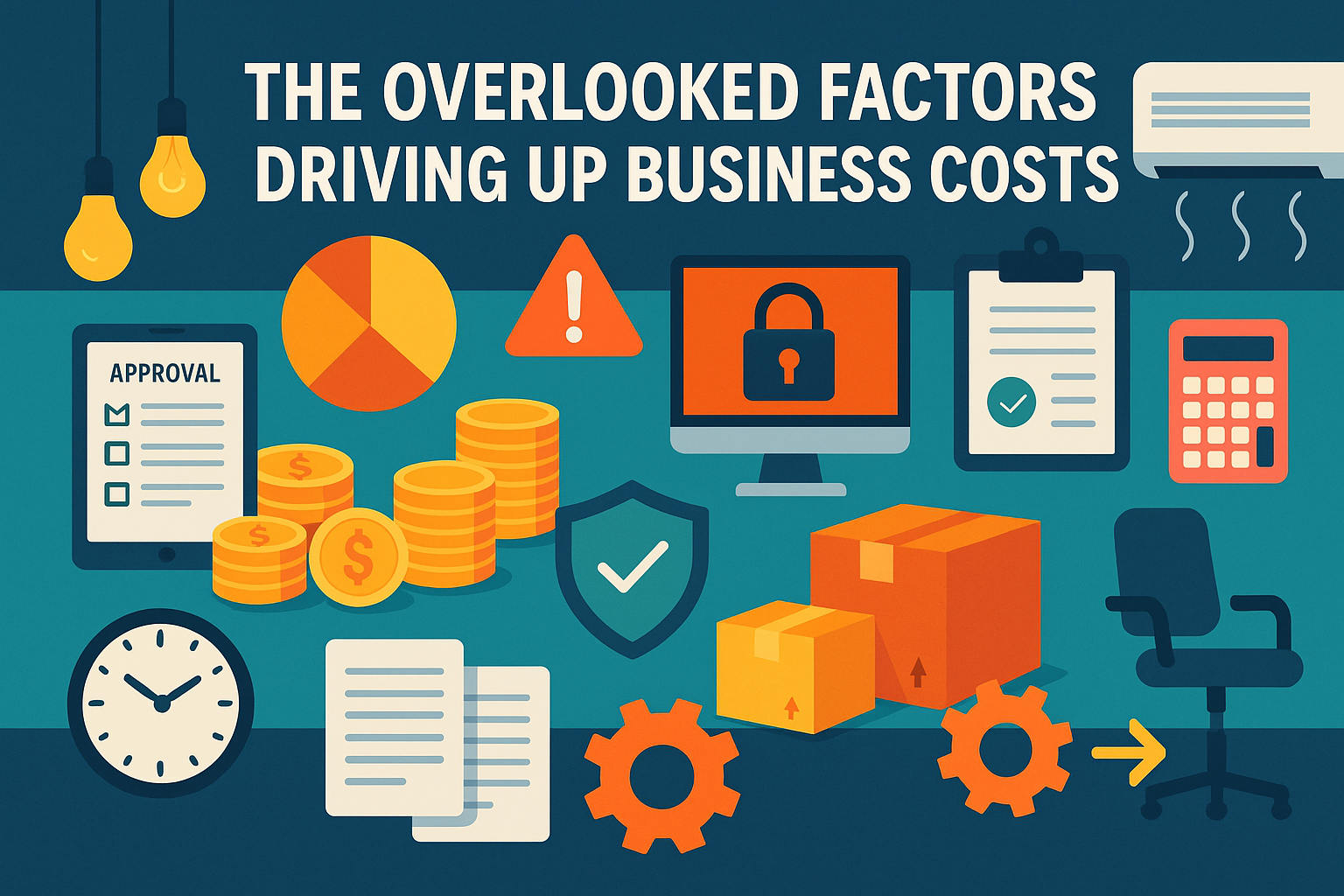The Overlooked Factors Driving Up Business Costs

In today’s fast-moving business environment, it’s easy to point to obvious expense drivers like payroll or rent. But beneath the surface, less apparent factors quietly add up, draining resources and swallowing profits. Understanding these hidden cost areas empowers businesses to act smartly and stay ahead of financial curveballs.
Operational Inefficiencies and Waste
Every business, no matter how well-run, faces operational inefficiencies. These inefficiencies often fly under the radar—inefficient workflows, manual tasks that should be automated, poor inventory management, even simple issues like outdated software. For example, relying on a paper-based approval process that takes days instead of hours adds costs in time, salaries, and opportunity loss.
Another contributor is wastage. Whether it’s surplus office supplies gathering dust or food waste in breakrooms, small leaks—if unaddressed—become torrents over time.
Accrued Expense: The Silent Cost Accumulator
One accounting concept that often surprises small and mid-sized firms is accrued expense. On paper, it might seem abstract: expenses recorded but not yet paid. However, if left unchecked, accrued expenses can balloon monthly, skewing budgets and creating cash-flow tight spots.
Imagine receiving monthly utility bills in arrears. If you don’t track those costs real-time, you may think you’ve got budget breathing room—only to find yourself funded poorly when the electric or gas bill lands. Worse yet, interest and penalties can quietly creep in. Monitoring accrued expenses isn’t just bookkeeping—it’s strategic budgeting in disguise.
Rising Insurance Premiums and Risk Management Costs
Insurance costs have been on a steep incline. Recent data shows commercial insurance premiums rose by 10% year-over-year in 2024, driven by natural disasters and supply-chain disruptions. As insurers face bigger risk pools, businesses are hit with higher costs—even if they’ve never filed a claim.
Simultaneously, risk-management practices required by insurers or corporate policies—such as annual audits, equipment inspections, and compliance checks—add direct costs and divert staff time from core activities.
Environmental and Compliance Costs
Regulatory compliance is non-negotiable, but it isn’t cheap. From GDPR and data security measures to localized environmental rules, compliance demands documentation, audits, and often external consultation. Failing to invest in compliance isn’t a bargain—it’s a gamble. Fines, product recalls, or reputational hits from non-compliance often dwarf the upfront investment.
For businesses managing air quality—particularly in manufacturing or healthcare—investments in air filtration systems aren’t just compliance actions; they’re cost drivers. Sure, an efficient filtration system can pay off over time by reducing health-related absences and improving productivity—but the initial costs, filters, maintenance, and upgrades all add up.
Hidden Cybersecurity and IT Maintenance Bills
In a world where cyberattacks are increasingly common, investing in cybersecurity is no longer optional. But IT security is riddled with hidden costs:
- Subscription fees for SaaS security tools
- Licensing costs for antivirus, VPNs, endpoint detection
- Mandatory patches and regular updates
- Hiring or retaining skilled IT staff
- Potential downtime while systems are updated
These often-overlooked costs aren’t one-off purchases. They form a continuous investment cycle essential to protect both data and trust.
Energy Consumption Beyond the Bill
Yes, electricity bills are obvious. But what about energy consumption that hides elsewhere? Consider:
- Inefficient lighting systems that run longer than necessary
- Outdated HVAC units that require excessive power
- Machines left idling overnight
- Employee hotspots like coffee machines or personal heaters
Investing in energy audits and smarter control systems—such as motion-sensor lighting or programmable thermostats—can help, but also introduces audit costs, installation fees, and maintenance contracts.
Staff Turnover and Training Rework
Many businesses underestimate how much turnover really costs. Beyond severance and job postings, hidden costs include knowledge loss, errors by less experienced replacements, training time, and the productivity dip that hits both new and existing staff. A study by the Society for Human Resource Management (SHRM) estimates replacing a salaried employee can range from six to nine months of salary on average. Source: SHRM, 2024. It’s more than a line item—it affects morale, customer service, and institutional memory.
Maintenance Scheduling and Unplanned Downtime
Planned maintenance is a necessary evil—and unplanned downtime is a business killer. Missed maintenance schedules can cause machinery to break unexpectedly, leading to emergency repairs, expensive overtime rates, and lost production. Whether it’s factory equipment or a key server, downtime bites hard—and unexpectedly.
Quality Control Mishaps and End-of-Line Failures
Failures at or near the end of your delivery or production cycle are the most expensive. A returned product triggers returns logistics costs, warranty work, restocking fees, and even customer reputation hits. Failing quality control early might save a bit on inspections but can multiply costs later. Preventive QC is a smart investment, not a cost center.
Real-World Example: The Hidden Cost in Food & Beverage
Let’s say a small coffee roastery buys green beans in bulk. On the surface, the bean cost is clear—but what about:
- Storage losses due to moisture or pests
- Packaging misprints requiring reorders
- Freight surcharges not included in “CIF” pricing
- Waste from roast misfires
- Returns when aroma is off from packaging delays
Each of these factors bleeds margin—even if the initial bean cost is sound.
Strategies to Mitigate Hidden Costs
Identifying hidden costs is the first step. Here’s a list of strategies that have worked for many businesses:
- Conduct regular expense audits, including small/recurring costs
- Automate manual approval workflows and record-keeping
- Implement energy-efficiency reviews quarterly
- Plan maintenance proactively, not reactively
- Leverage digital inventory systems for tracking losses
- Run anonymized staff feedback surveys on unrecognized expense drivers
Final Thoughts
Hidden costs aren’t insurmountable—but they thrive on inattention. When businesses take a magnifying glass to accrued expenses, inefficient processes, regulatory compliance, and energy use, real profits begin to emerge. Your balance sheet gets sharper, your operations more resilient, and your risk profile far more manageable.
Navigating these overlooked cost factors takes diligence and curiosity—but the payoff is big: better margins, happier teams, and stronger sustainability. Here’s to uncovering and conquering the quiet drainers of business health—one hidden cost at a time.



